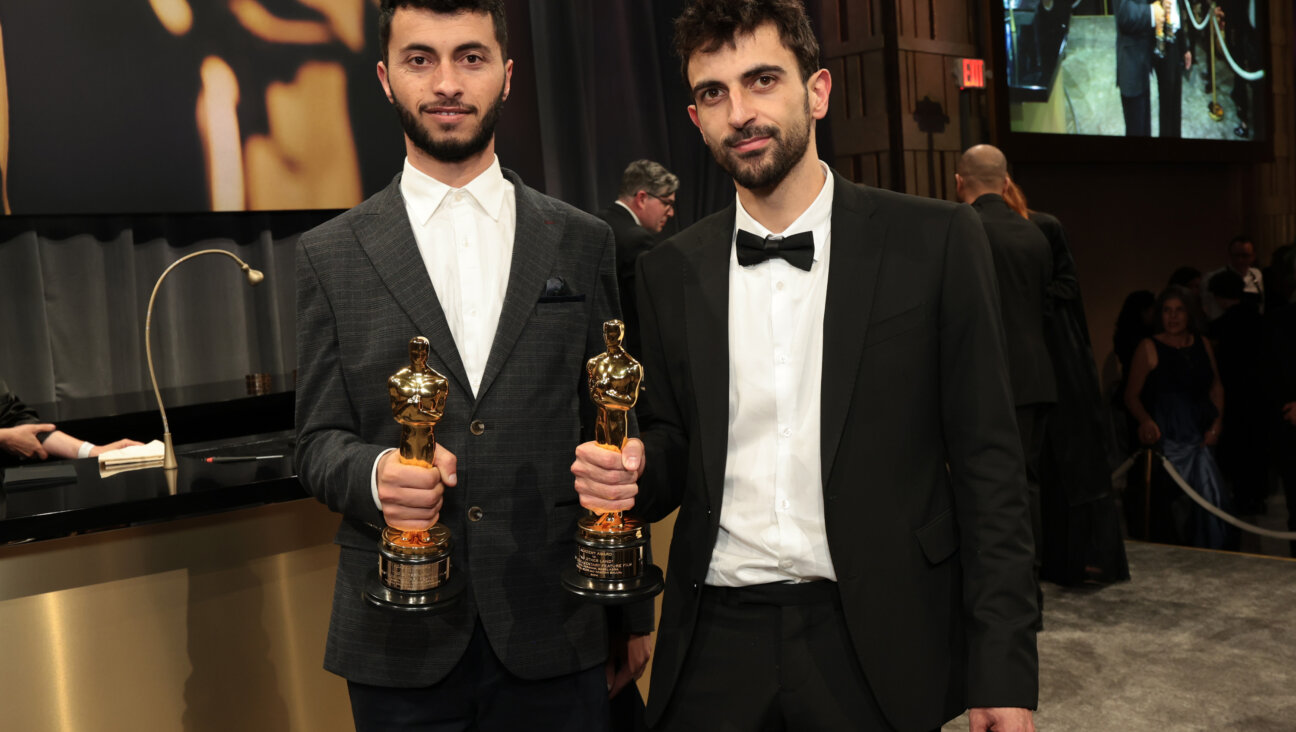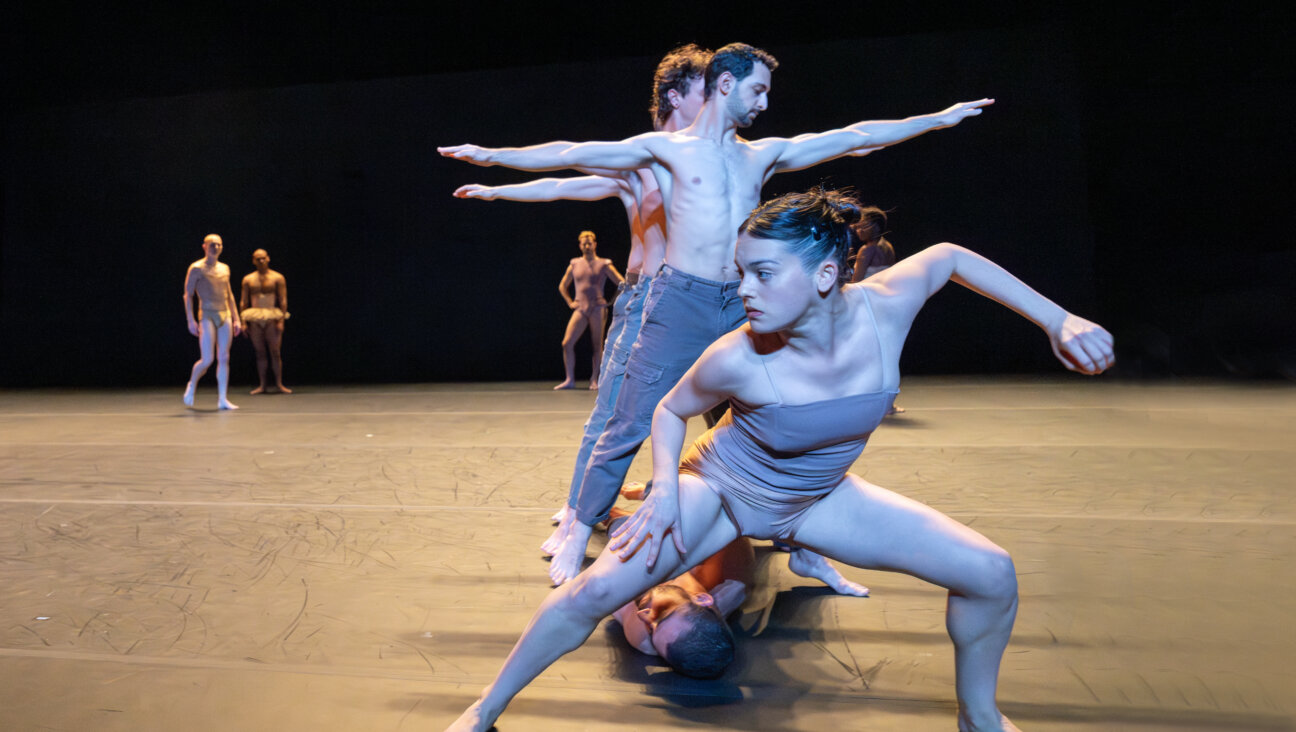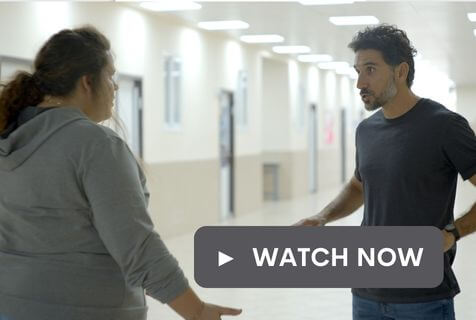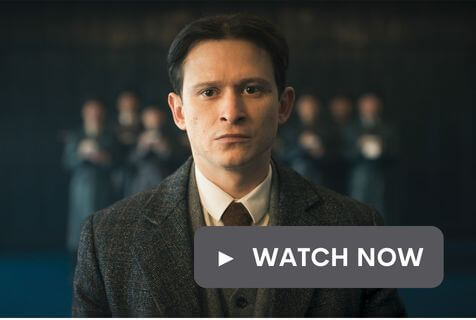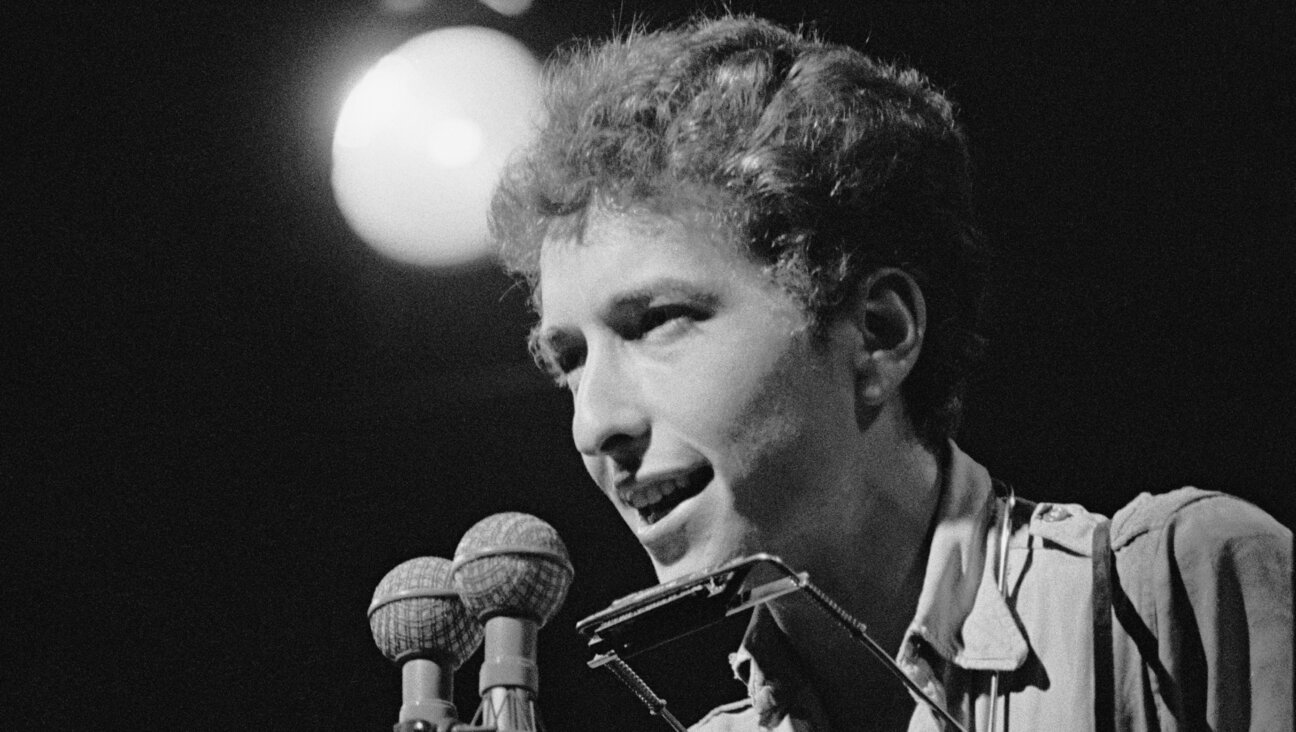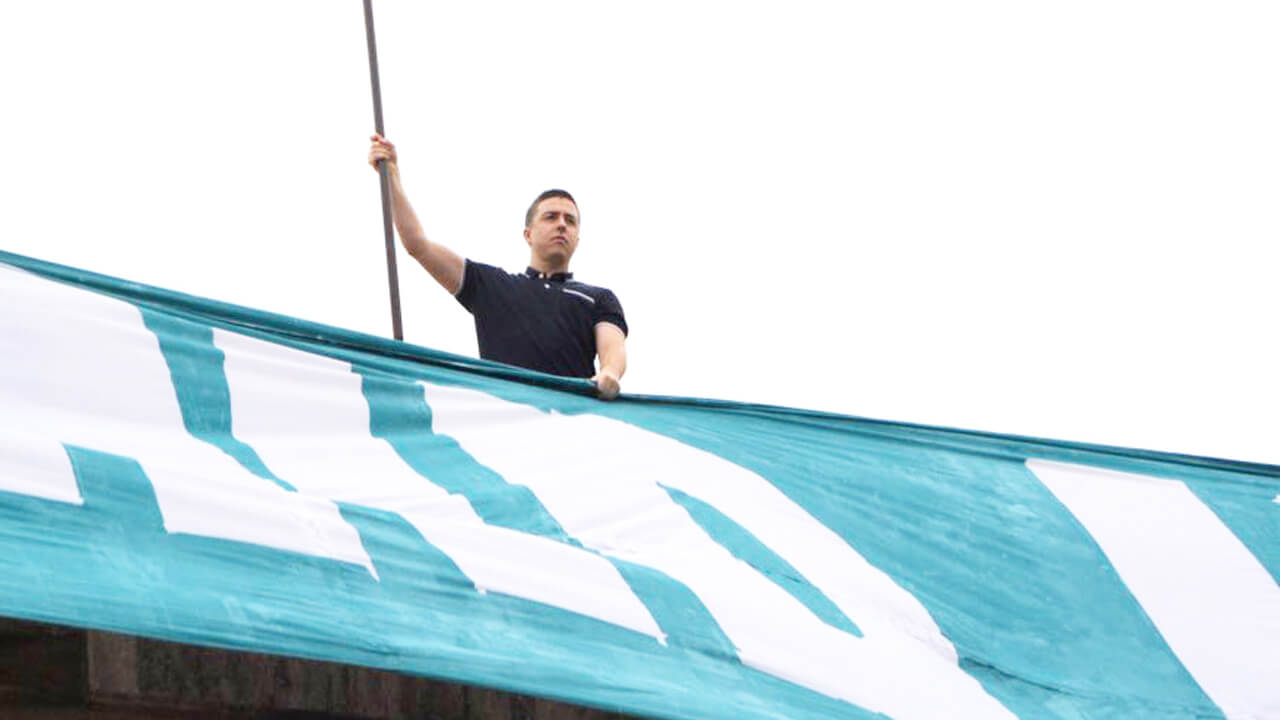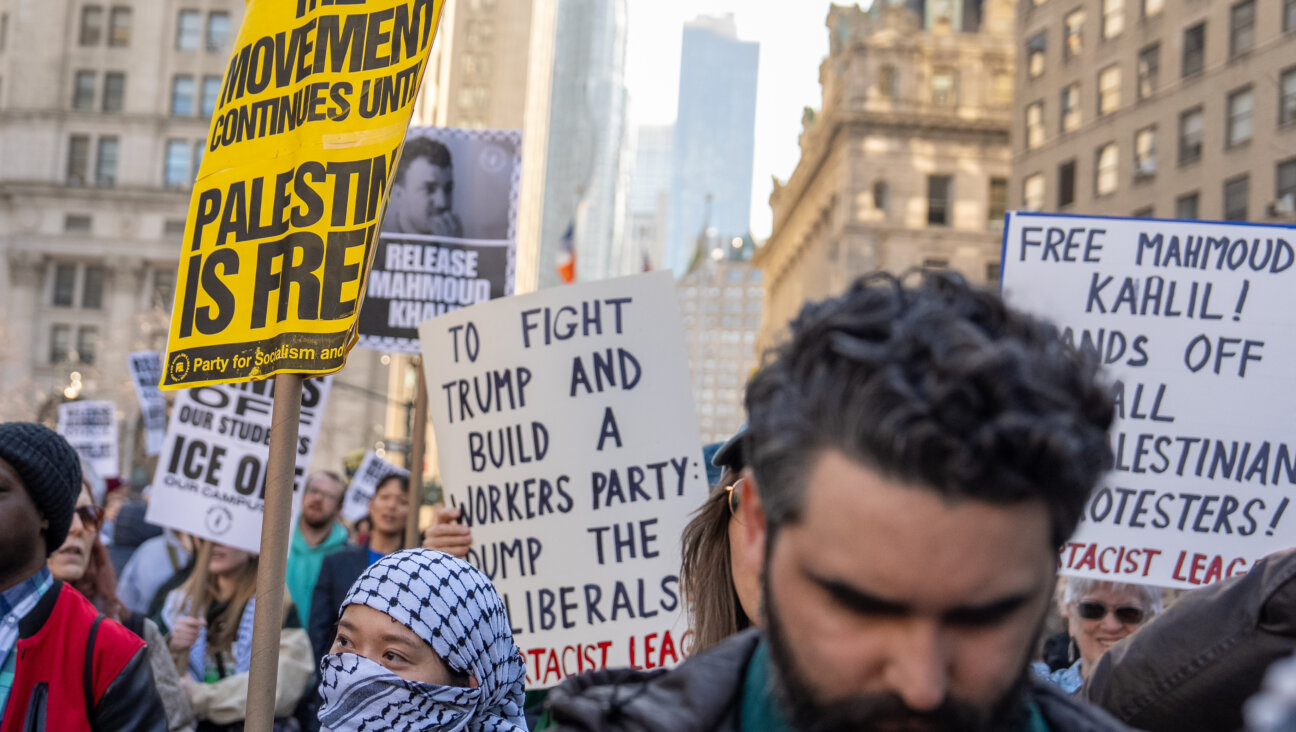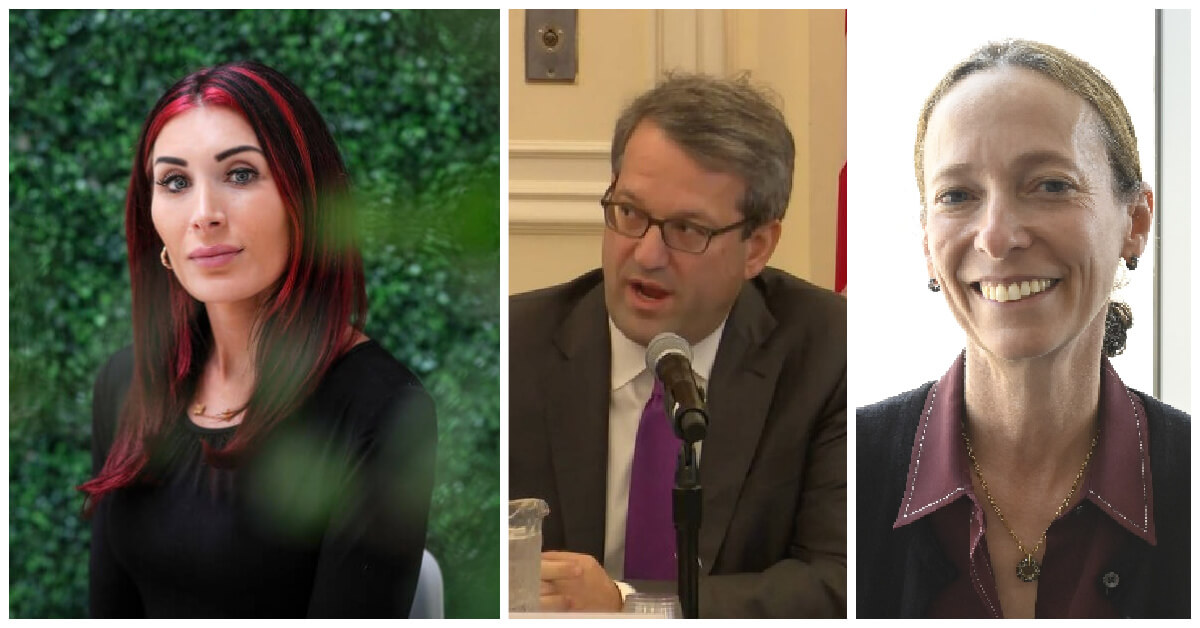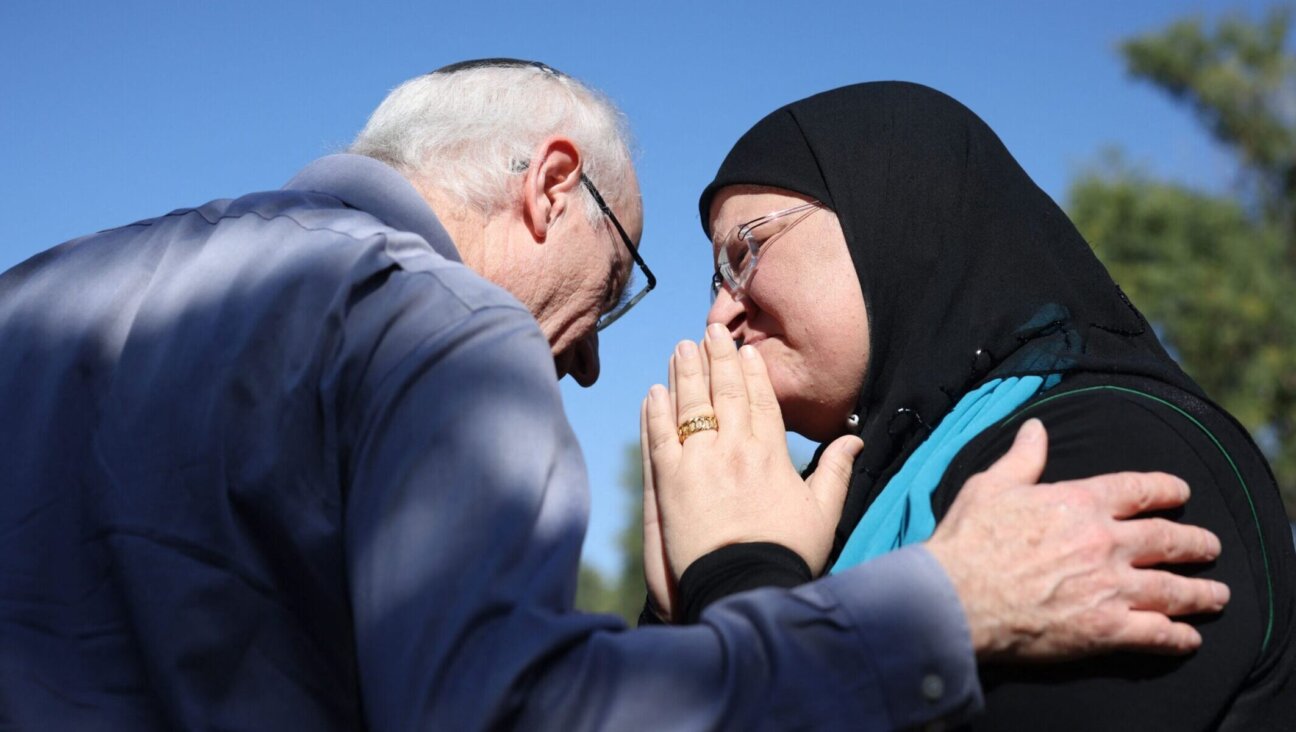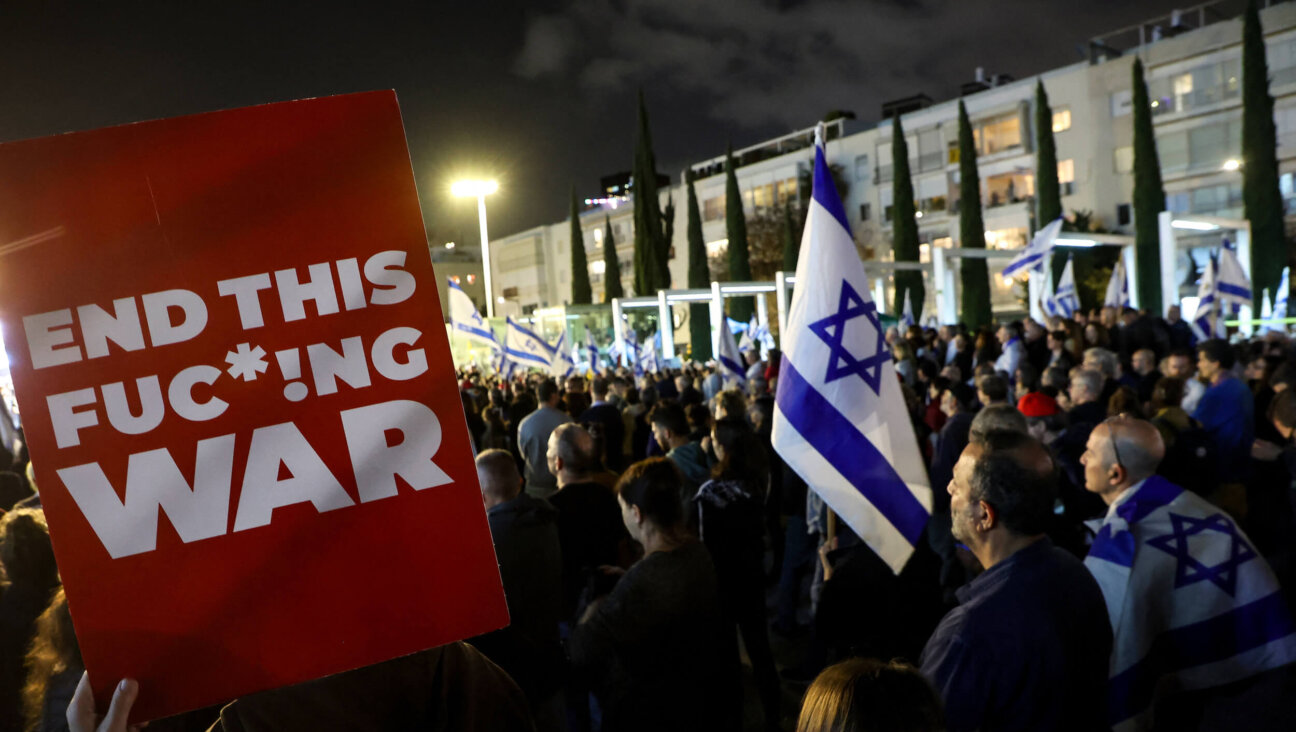The Greatest Shoah on Earth
My Holocaust
By Tova Reich
HarperCollins, 336 pages, $24.95.
Of all the hucksters, fakers, phonies and wannabes to have been spawned by the so-called “Shoah business,” few can hold a (yahrzeit) candle to Maurice Messer, the fumbling, stumbling, malapropism-spewing figure at the heart of Tova Reich’s deliciously wicked satirical novel “My Holocaust.”
A wheeler-dealer, schnorrer, glutton and letch — and, yes, a Holocaust survivor — Messer got his start in ladies’ undergarments. But when the Holocaust became “more fashionable even than padded brassieres,” he changed course and, together with his nebbish son, Norman, founded Holocaust Connections, Inc., a concern devoted to lending the imprimatur of the Holocaust to any and all comers — for the right price, of course. In his quest for self-aggrandizement, the old man lies about having fought with the partisans and is willing to betray even his nearest and dearest; in short, there is nobody Messer — German for “knife” — wouldn’t stab in the back. Oh, and he is also chairman of the United States Holocaust Memorial Museum in Washington, D.C.
Despite his many successes, Messer has a problem: His one and only grandchild, Nechama, a girl weaned on tales of Jewish tragedy and suffering, has gone off script — or has perhaps followed the family script all too literally. This “Holocaust princess,” who at her bat mitzvah insisted on being twinned with a Vilna girl cut down by the Nazis, has taken up as her own private cause the persecution of the world’s Christians, the “Christian Holocaust,” as she defiantly puts it. Undeterred by protests from her family (“Christians are not — I repeat not! — acceptable Holocaust material,” her father wails), she enters a convent, and not just any old convent. She joins up with the Carmelite sisters housed just outside the gates of Auschwitz.
Reich is no stranger to the world of Holocaust commemoration — indeed, no stranger to the twisted tale of the Carmelite sisters of Auschwitz. When, in 1989, a group of protesters scaled the fence surrounding the convent, which at that time was located on the grounds of the death camp itself, they were led by her brother Rabbi Avi Weiss — or “that crazy spiderman rabbi,” as one of the novel’s characters calls him. The author is also the wife of Walter Reich, who served as director of D.C.’s Holocaust museum from 1994 to 1998. His departure came in the aftermath of a public relations disaster set into motion by a botched attempt to have Yasser Arafat visit the institution. Though the invitation was said to have been initiated by the museum’s then chairman, Miles Lerman, it seemed as though Reich was made to take the fall.
“My Holocaust” is clearly an attempt to settle some old scores. Yet, while there are similarities between Lerman and Messer — as there are ties between Messer’s chief aide, Monty Pincus, and historian Michael Berenbaum — it would be a mistake to see Reich’s novel as a simple roman à clef. The book is far more than the story of a couple of boobs trying to run a museum. It is, rather, a much grander indictment, an indictment of an entire universe of groups — Catholic, Mormon, German, Polish, Japanese, African American, Native American, Palestinian, feminist and more — all looking to claim their own little slice of Holocaust victimhood. Despite parallels to real-world entities, this is a work of the imagination, through and through.
But the fact that she’s writing fiction does not in any way diminish the force of Reich’s sting. She doesn’t just skewer her subjects; she puts them on the grill and chars them. While visiting Auschwitz, the adult daughter of a potential museum donor sees a fellow visitor in a wheelchair and says to her hosts: “I really really appreciate it that Auschwitz is wheelchair-accessible. You know what I mean? Was it always that way — I mean, even at the time of the Holocaust?” Later in the novel, this same woman — an emotionally stunted ball of neuroses with an unusual attachment to her DustBuster — becomes director of the Holocaust museum. Under her baton, the institution is rededicated to the Holocaust’s “other” victims: Gypsies, Freemasons, Jehovah’s Witnesses, Soviet prisoners of war, political dissidents, homosexuals and, yes, the handicapped and disabled.
By novel’s end, the museum becomes both a literal and figurative battleground, much as J.P. Morgan’s Manhattan mansion does at the close of E.L. Doctorow’s “Ragtime.” The contrast is instructive: While the Morgan mansion serves as shorthand for the American Dream in early 20th-century America, the Holocaust museum becomes its perverse early 21st-century corollary — a temple for the aggrieved.
The novel’s one noncontemptible voice belongs to Nechama, who reappears in the book’s final pages after having spent the bulk of the story in quiet contemplation at the convent outside Auschwitz. When she emerges, silent and nearly invisible, she has been transfigured into a kind of living martyr with a Clinton-like ability to feel all pain. “My passion,” she whispers, is “to keep all the suffering that ever was and ever will be everlastingly fresh in my mind…. Again and again, minute after minute, my hand must spring to my mouth in horror. Don’t let me get used to it, Lord; that’s all I ask…. Keep me forever suspended in thin air, in complete consciousness and pure terror, in the space between the leap from the burning tower and the final crash onto the cold ground.”
Such is the apotheosis of suffering, Reich seems to be saying, a theology as un-Jewish as it is impracticable. And yet, despite her critiques of the Holocaust business and of the countless hangers-on trying to claim their piece of it, Reich doesn’t seem to offer an alternative to the thorny questions of just how to preserve properly the memory of the 6 million and just what connection the Holocaust has to other atrocities, past, present and future. Then again, maybe her answers are so simple as to be staring one right in the face. Maybe the Holocaust has no connection to history’s other horrors, and maybe the 6 million should be allowed to just rest in peace.
Gabriel Sanders is the associate editor of the Forward.









